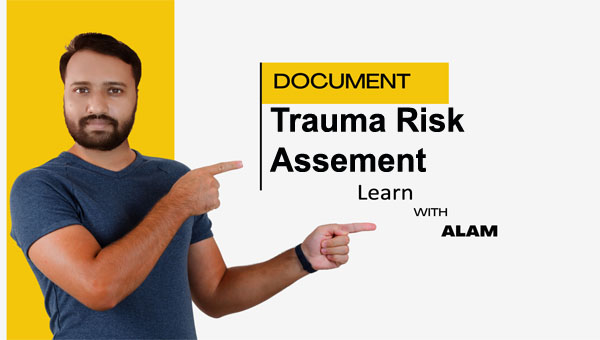
Trauma Risk Assessment Procedure: A Step-by-Step Guide for Emergency Situations
Original price was: 100.00৳ .29.00৳ Current price is: 29.00৳ .
Trauma Risk Assessment Procedure: A Step-by-Step Guide for Emergency Situations
Introduction
In trauma care, quick and accurate risk assessment can make the difference between life and death. Trauma procedure risk assessment involves identifying potential dangers and implementing safety measures to protect patients and first responders during emergency situations. Whether you’re a first responder, medical professional, or safety officer, understanding how to conduct a trauma risk assessment is essential for efficient and safe emergency management.
This guide covers the critical steps, best practices, and protocols for conducting trauma risk assessments.
What Is Trauma Procedure Risk Assessment?
Trauma procedure risk assessment is the process of identifying hazards, evaluating their severity, and taking steps to mitigate them while managing trauma cases. This ensures that both patients and responders are protected from preventable harm.
Why Is Trauma Procedure Risk Assessment Important?
- Protects First Responders: Prevents injuries to medical personnel.
- Improves Patient Outcomes: Ensures safe and effective trauma care.
- Legal Compliance: Adheres to safety and emergency protocols.
- Reduces Errors: Identifies risks before they become critical problems.
Key Steps in Trauma Procedure Risk Assessment
1. Scene Size-Up and Hazard Identification
Upon arrival at an incident, quickly evaluate the scene for potential dangers:
- Traffic hazards (e.g., car accidents).
- Fire, hazardous materials, or electrical risks.
- Hostile individuals or unstable structures.
Keywords: “Scene size-up,” “trauma scene hazard identification.”
2. Primary Patient Risk Assessment
Check for life-threatening conditions using the ABCDE approach:
- Airway: Ensure the airway is clear.
- Breathing: Look for respiratory distress.
- Circulation: Check for major bleeding.
- Disability: Assess neurological status.
- Exposure: Look for additional injuries.
Keywords: “Primary trauma survey,” “ABCDE trauma assessment.”
3. Dynamic Risk Assessment
Continuously monitor risks throughout the procedure:
- Track changes in patient condition.
- Reassess the environment for new hazards.
Keywords: “Dynamic risk assessment in trauma care.”
4. Communication and Team Coordination
Effective communication helps manage risks:
- Use standardized protocols like SBAR (Situation, Background, Assessment, Recommendation) for clear updates.
- Ensure all team members are aware of identified risks.
Keywords: “Trauma team communication,” “SBAR protocol in trauma response.”
Best Practices for Effective Trauma Risk Assessment
- Wear Personal Protective Equipment (PPE): Always use gloves, masks, and eye protection.
- Follow Protocols: Use guidelines like ATLS (Advanced Trauma Life Support).
- Stay Updated: Regularly train in trauma risk assessment procedures.
- Document Everything: Record identified risks and mitigation actions for accountability and improvement.
Keywords: “PPE in trauma care,” “ATLS protocol,” “trauma risk documentation.”
Common Challenges in Trauma Risk Assessment
- Rapidly Changing Situations: Emergencies are dynamic; continuous reassessment is crucial.
- High-Stress Environments: Stress can affect decision-making. Training helps improve performance under pressure.
- Resource Limitations: Adapt to situations where equipment or personnel are limited.
Conclusion
Conducting a thorough trauma procedure risk assessment is essential for the safety of patients and emergency responders. By following systematic steps, using best practices, and maintaining clear communication, risks can be effectively identified and mitigated. Continuous learning and training ensure that trauma teams are always ready to manage high-risk situations efficiently.
FAQs
1. What is the first step in trauma risk assessment?
The first step is a scene size-up to identify hazards and ensure safety.
2. Why is dynamic risk assessment important in trauma care?
It allows responders to adapt to changing conditions and new hazards.
3. What are the common risks during trauma procedures?
Common risks include environmental hazards, patient deterioration, and responder safety issues.
Only logged in customers who have purchased this product may leave a review.






Reviews
There are no reviews yet.